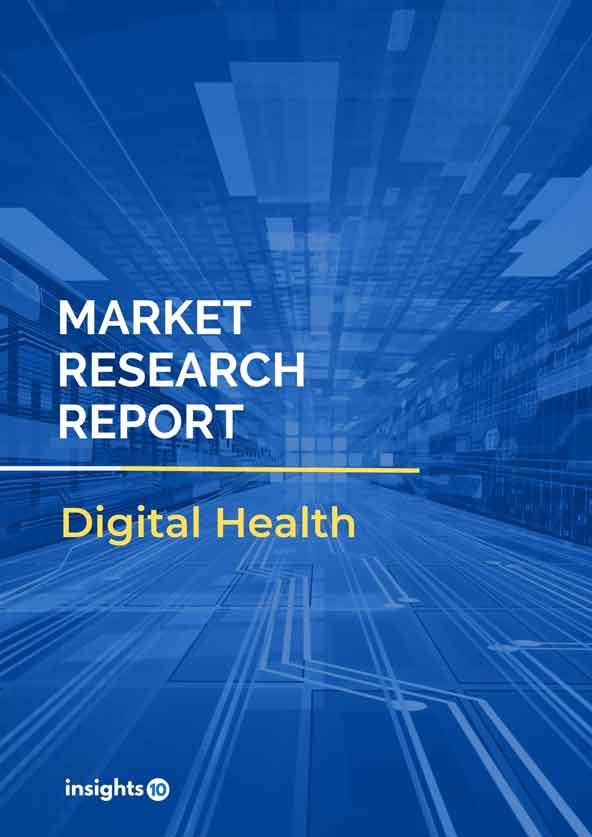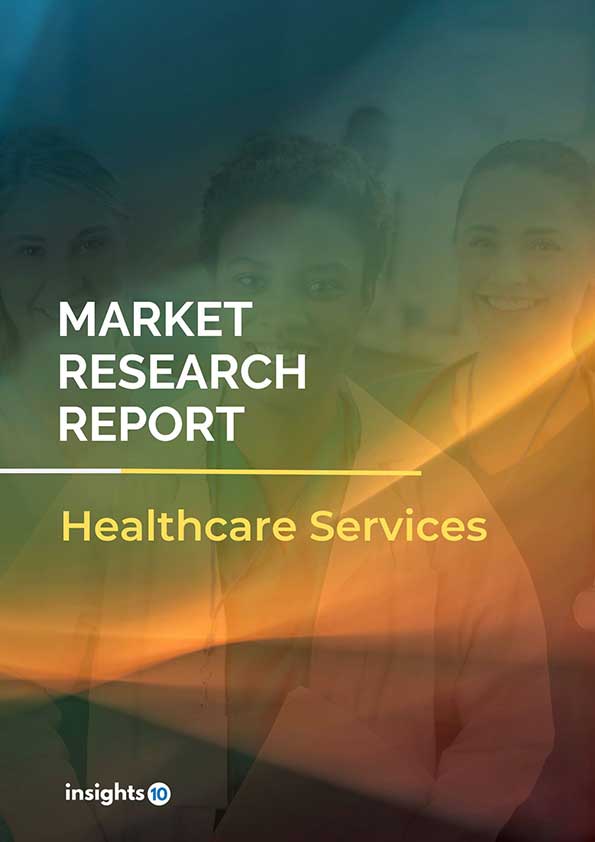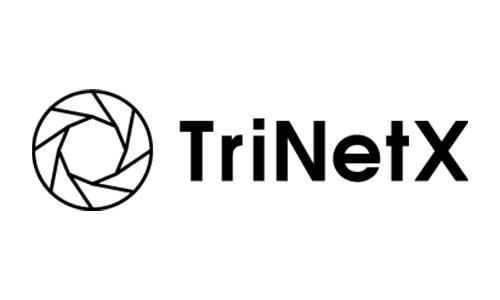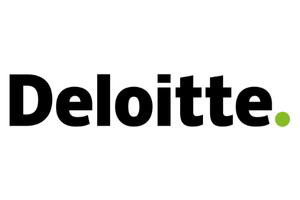China Healthcare Financial Analytics Market Analysis
The China Healthcare Financial Analytics market size was valued at $xx Mn in 2022 and is estimated to expand at a compound annual growth rate (CAGR) of 8.3% from 2022 to 2030 and will reach $xx Mn in 2030. The market is segmented by type, component, and deployment. China’s Healthcare Financial Analytics market will grow as the adoption of technology in the healthcare industry is increasing in China, which is driving demand for healthcare financial analytics solutions. The key market players are Yitu Healthcare, Infervision, United Imaging, Wision AI, Yidu Cloud, Ping An Healthcare and Technology Company, BGI Genomics, and others.
Buy Now

China Healthcare Financial Analytics Market Executive Summary
The China Healthcare Financial Analytics market size was valued at $xx Mn in 2022 and is estimated to expand at a compound annual growth rate (CAGR) of 8.3% from 2022 to 2030 and will reach $xx Mn in 2030. The market for healthcare financial analytics in China has expanded quickly in recent years as a result of a variety of reasons, including growing healthcare prices, expanding healthcare demand, and technological improvements. Beijing has put in place a big data infrastructure to monitor patient outcomes and hospital operations. Hospital managers may utilise the platform to gather data on patterns and trends in hospital operations and use that data to allocate resources and improve patient care.
Healthcare financial analytics are being utilised in Shanghai to control the expense of treating chronic illnesses. The city has put in place a payment scheme that rewards hospitals for cutting the cost of treating chronic illnesses while maintaining quality. A cloud-based healthcare analytics platform has also been introduced in Guangdong Province, allowing hospitals to share patient data and enhance care coordination. Moreover, the platform has analytics capabilities that assist hospitals in identifying patients who are at risk of contracting chronic diseases and offering them targeted therapies to stop disease development. Moreover, Sichuan Province is using healthcare financial analytics to increase the effectiveness of hospital operations. A hospital management system that incorporates analytics capabilities has been installed by the province to analyse patient flow, optimise staffing levels, and shorten wait times.
In conclusion, healthcare financial analytics is becoming more and more significant in the Chinese healthcare system, allowing hospitals and healthcare providers to increase patient outcomes while lowering costs and providing higher-quality treatment. The market for healthcare financial analytics in China will so expand in the years to come.
Market Dynamics
Market Growth Drivers
The ageing population, rising healthcare expenses, and increased demand for healthcare services are all contributing to China's fast growing healthcare sector. As a result of this expansion, firms that specialise in healthcare financial analytics now have the chance to assist healthcare organisations improve their financial performance by offering data-driven insights and solutions.
In addition, China's growing embrace of technology in the healthcare sector is fueling demand for healthcare financial analytics solutions. Advanced analytics technologies are being used by healthcare businesses to evaluate financial data, spot trends, and make wise decisions. In addition, the Chinese government has put regulations in place to stimulate innovation and investment in the healthcare business. Companies that provide healthcare financial analytics are able to develop and thrive thanks to this help.
Market Restraints:
The Chinese market for healthcare financial analytics is not yet standardised. This might limit the effectiveness of analytics tools and make it challenging for healthcare companies to compare data from various providers. In the market for healthcare financial analytics, data quality is also a major problem since certain healthcare companies have restricted access to high-quality data. This may reduce the accuracy and effectiveness of analytics tools.
Healthcare financial analytics firms intending to enter the market may encounter difficulties due to China's strict regulations on the healthcare sector. To engage in the Chinese healthcare sector, businesses must manage complicated rules and compliance requirements.
Competitive Landscape
Key Players
- Yitu Healthcare
- Infervision
- United Imaging
- Wision AI
- Yidu Cloud
- Ping An Healthcare and Technology Company
- BGI Genomics
- Cn-Healthcare
- iCarbonX
- Miaoshou Doctor
Recent Developments
Yitu Healthcare: In 2021, Yitu Healthcare raised $310 million in a Series D funding round to support the development of its healthcare AI solutions, including financial analytics tools.
Infervision: In 2021, Infervision launched a new financial analytics platform designed to help healthcare organizations analyze financial data and optimize their revenue streams.
United Imaging: In 2020, United Imaging announced the launch of its uAI Financial Analytics platform, which provides advanced analytics tools to help healthcare organizations improve financial performance.
Yidu Cloud: In 2021, Yidu Cloud raised $170 million in a funding round led by Hillhouse Capital to support the development of its healthcare financial analytics platform.
Ping An Healthcare and Technology Company: In 2021, Ping An Healthcare and Technology Company announced the launch of its Intelligent Revenue Management System, which uses AI and machine learning to help healthcare organizations optimize revenue cycles and improve financial performance.
Healthcare Policies and Regulatory Landscape
China has implemented regulations to manage the collection, analysis, and use of healthcare data, including financial data. Financial healthcare analytics are governed by the following main legislation in China:
Cybersecurity Law: Healthcare organisations must create and execute data protection policies and processes to secure personal information, including healthcare data, in accordance with the Cybersecurity Law. The law also requires that cybersecurity incidents be reported to the appropriate authorities.
Medical Device Regulations: The manufacturing, distribution, and marketing of medical devices in China are regulated by the Medical Device Regulations. Manufacturers of medical devices are required under these rules to keep track of their financial transactions and submit financial reports to the appropriate authorities.
Administrative Measures on the Medical Institutions: These regulations control how Chinese medical institutes are run and managed. For the purpose of ensuring the authenticity and dependability of financial data, they mandate that medical facilities set up accounting systems and financial management practises.
National Health Commission Notice on Strengthening the Management of Healthcare Data: This notice lays forth standards for the gathering, handling, and utilisation of healthcare data in China. It demands that healthcare institutions safeguard the privacy and security of patient information and that any data breaches be reported to the appropriate authorities.
1. Executive Summary
1.1 Digital Health Overview
1.2 Global Scenario
1.3 Country Overview
1.4 Healthcare Scenario in Country
1.5 Digital Health Policy in Country
1.6 Recent Developments in the Country
2. Market Size and Forecasting
2.1 Market Size (With Excel and Methodology)
2.2 Market Segmentation (Check all Segments in Segmentation Section)
3. Market Dynamics
3.1 Market Drivers
3.2 Market Restraints
4. Competitive Landscape
4.1 Major Market Share
4.2 Key Company Profile (Check all Companies in the Summary Section)
4.2.1 Company
4.2.1.1 Overview
4.2.1.2 Product Applications and Services
4.2.1.3 Recent Developments
4.2.1.4 Partnerships Ecosystem
4.2.1.5 Financials (Based on Availability)
5. Reimbursement Scenario
5.1 Reimbursement Regulation
5.2 Reimbursement Process for Diagnosis
5.3 Reimbursement Process for Treatment
6. Methodology and Scope
Healthcare Financial Analytics Market Segmentation
By Type
- Claim Analytics
- Revenue Cycle Management
- Risk Management Analytics
- Others
By Component
- Hardware
- Software & Services
By Deployment
The market is divided into on-premises and cloud-based deployments. Because cloud platforms are being adopted at a faster rate, the cloud-based category is anticipated to experience stronger growth throughout the projected period. The growing use of cloud analytics, which enables businesses to include data from all sources, is what is driving the financial analytics industry. Additionally, the market for healthcare financial analytics is anticipated to benefit from the desire for better claims and revenue management systems in healthcare and the acceptance of cloud computing across numerous industries. Some governments in Europe are starting programmes to promote the growth of information technology in healthcare.
- On-premise
- Cloud-based
Methodology for Database Creation
Our database offers a comprehensive list of healthcare centers, meticulously curated to provide detailed information on a wide range of specialties and services. It includes top-tier hospitals, clinics, and diagnostic facilities across 30 countries and 24 specialties, ensuring users can find the healthcare services they need.
Additionally, we provide a comprehensive list of Key Opinion Leaders (KOLs) based on your requirements. Our curated list captures various crucial aspects of the KOLs, offering more than just general information. Whether you're looking to boost brand awareness, drive engagement, or launch a new product, our extensive list of KOLs ensures you have the right experts by your side. Covering 30 countries and 36 specialties, our database guarantees access to the best KOLs in the healthcare industry, supporting strategic decisions and enhancing your initiatives.
How Do We Get It?
Our database is created and maintained through a combination of secondary and primary research methodologies.
1. Secondary Research
With many years of experience in the healthcare field, we have our own rich proprietary data from various past projects. This historical data serves as the foundation for our database. Our continuous process of gathering data involves:
- Analyzing historical proprietary data collected from multiple projects.
- Regularly updating our existing data sets with new findings and trends.
- Ensuring data consistency and accuracy through rigorous validation processes.
With extensive experience in the field, we have developed a proprietary GenAI-based technology that is uniquely tailored to our organization. This advanced technology enables us to scan a wide array of relevant information sources across the internet. Our data-gathering process includes:
- Searching through academic conferences, published research, citations, and social media platforms
- Collecting and compiling diverse data to build a comprehensive and detailed database
- Continuously updating our database with new information to ensure its relevance and accuracy
2. Primary Research
To complement and validate our secondary data, we engage in primary research through local tie-ups and partnerships. This process involves:
- Collaborating with local healthcare providers, hospitals, and clinics to gather real-time data.
- Conducting surveys, interviews, and field studies to collect fresh data directly from the source.
- Continuously refreshing our database to ensure that the information remains current and reliable.
- Validating secondary data through cross-referencing with primary data to ensure accuracy and relevance.
Combining Secondary and Primary Research
By integrating both secondary and primary research methodologies, we ensure that our database is comprehensive, accurate, and up-to-date. The combined process involves:
- Merging historical data from secondary research with real-time data from primary research.
- Conducting thorough data validation and cleansing to remove inconsistencies and errors.
- Organizing data into a structured format that is easily accessible and usable for various applications.
- Continuously monitoring and updating the database to reflect the latest developments and trends in the healthcare field.
Through this meticulous process, we create a final database tailored to each region and domain within the healthcare industry. This approach ensures that our clients receive reliable and relevant data, empowering them to make informed decisions and drive innovation in their respective fields.
To request a free sample copy of this report, please complete the form below.
We value your inquiry and offer free customization with every report to fulfil your exact research needs.








































